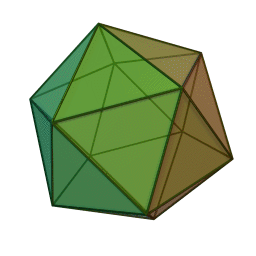|
Raphidovirus
''Raphidovirus'' (likely misspelled ''Rhaphidovirus'') is a genus of viruses, in the family ''Phycodnaviridae ''Phycodnaviridae'' is a family of large (100–560 kb) double-stranded DNA viruses that infect marine or freshwater eukaryotic algae. Viruses within this family have a similar morphology, with an icosahedral capsid (polyhedron with 20 f ...''. Alga serve as natural hosts. There is only one species in this genus: Heterosigma akashiwo virus 01 (HaV01, ''Raphidovirus japonicum''). Structure Viruses in ''Raphidovirus'' are enveloped, with icosahedral and round geometries, and T=169 symmetry. The diameter is around 100-220 nm. Genomes are linear, around 295kb in length. Life cycle Viral replication is nucleo-cytoplasmic. Replication follows the DNA strand displacement model. DNA-templated transcription is the method of transcription. The virus exits the host cell by lysis via lytic phospholipids. Alga serve as the natural host. Transmission routes are pas ... [...More Info...] [...Related Items...] OR: [Wikipedia] [Google] [Baidu] |
Phycodnaviridae Virion
''Phycodnaviridae'' is a family of large (100–560 kb) double-stranded DNA viruses that infect marine or freshwater eukaryotic algae. Viruses within this family have a similar morphology, with an icosahedral capsid (polyhedron with 20 faces). As of 2014, there were 33 species in this family, divided among 6 genera. This family belongs to a super-group of large viruses known as nucleocytoplasmic large DNA viruses. Evidence was published in 2014 suggesting that specific strains of ''Phycodnaviridae'' might infect humans rather than just algal species, as was previously believed. Most genera under this family enter the host cell by cell receptor endocytosis and replicate in the nucleus. ''Phycodnaviridae'' play important ecological roles by regulating the growth and productivity of their algal hosts. Algal species such '' Heterosigma akashiwo'' and the genus '' Chrysochromulina'' can form dense blooms which can be damaging to fisheries, resulting in losses in the aquaculture i ... [...More Info...] [...Related Items...] OR: [Wikipedia] [Google] [Baidu] |
Phycodnaviridae
''Phycodnaviridae'' is a family of large (100–560 kb) double-stranded DNA viruses that infect marine or freshwater eukaryotic algae. Viruses within this family have a similar morphology, with an icosahedral capsid (polyhedron with 20 faces). As of 2014, there were 33 species in this family, divided among 6 genera. This family belongs to a super-group of large viruses known as nucleocytoplasmic large DNA viruses. Evidence was published in 2014 suggesting that specific strains of ''Phycodnaviridae'' might infect humans rather than just algal species, as was previously believed. Most genera under this family enter the host cell by cell receptor endocytosis and replicate in the nucleus. ''Phycodnaviridae'' play important ecological roles by regulating the growth and productivity of their algal hosts. Algal species such '' Heterosigma akashiwo'' and the genus '' Chrysochromulina'' can form dense blooms which can be damaging to fisheries, resulting in losses in the aquacultur ... [...More Info...] [...Related Items...] OR: [Wikipedia] [Google] [Baidu] |
Viruses
A virus is a submicroscopic infectious agent that replicates only inside the living cells of an organism. Viruses infect all life forms, from animals and plants to microorganisms, including bacteria and archaea. Viruses are found in almost every ecosystem on Earth and are the most numerous type of biological entity. Since Dmitri Ivanovsky's 1892 article describing a non-bacterial pathogen infecting tobacco plants and the discovery of the tobacco mosaic virus by Martinus Beijerinck in 1898, more than 16,000 of the millions of virus species have been described in detail. The study of viruses is known as virology, a subspeciality of microbiology. When infected, a host cell is often forced to rapidly produce thousands of copies of the original virus. When not inside an infected cell or in the process of infecting a cell, viruses exist in the form of independent viral particles, or ''virions'', consisting of (i) genetic material, i.e., long molecules of DNA or RNA that ... [...More Info...] [...Related Items...] OR: [Wikipedia] [Google] [Baidu] |



